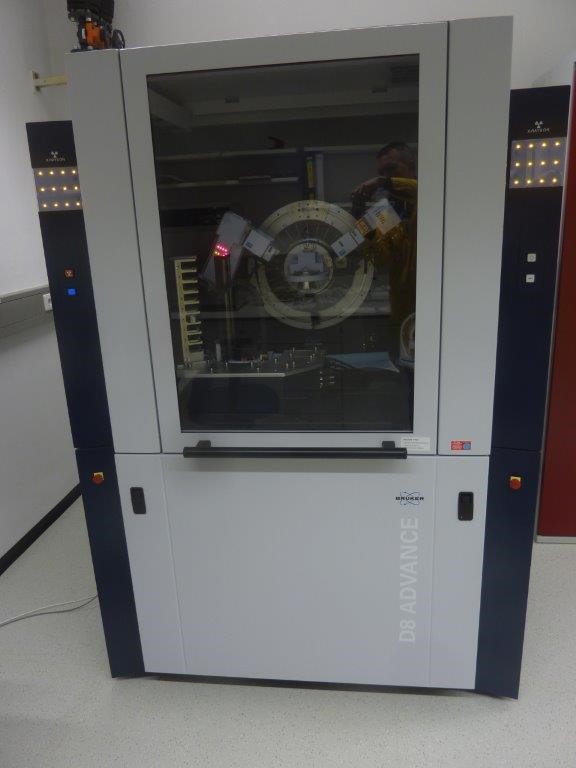x-ray diffraction
X-ray diffraction (XRD) is a non-destructive analytical technique used to identify and to characterize solid samples. Information on the crystallographic structure can be obtained without complex sample preparation and with low amount of sample. For any given crystalline material, both the position and the intensity of the reflections on the diffractogram are indicative of a particular phase (“fingerprint”). Quantitative information on a sample can be obtained from whole powder pattern decomposition, for example by the Rietveld method.
X-ray powder diffractograms are recorded in reflection mode using a D8 Advance A25 diffractometer (Bruker AXS) in Bragg-Brentano geometry (θ - θ) located in the controlled area of INE. X-rays are produced from a Cu anode and the intensity of the scattered radiation is detected with an energy dispersive detector (LynxEye XE-T). Powders, oriented or textured samples (such as sheet silicates), air-sensitive and/or radioactive samples (use of closed and airtight sample holder) can be analyzed using dedicated holders.
Information provided by XRD is of key importance in various areas of research activities at INE. Besides determining the mineralogical composition of natural samples, XRD is used to characterize samples after corrosion experiments (steel, cement waste form…), the purity of synthetic samples from (co)precipitation experiments (retention of radionuclides in solid phases, identification of precipitates).
Contact:
+49 721 608 24321

